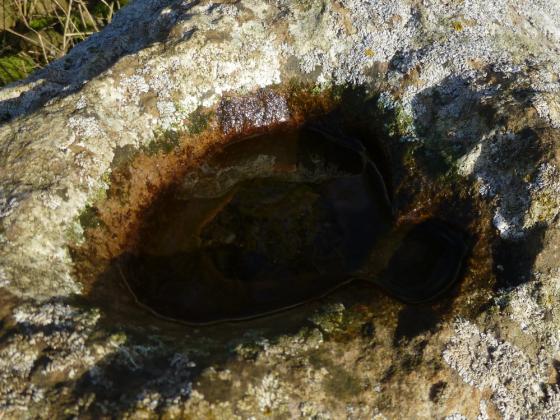Bringing the Mam C back to Essex for a week, I decide to stop off in Wiltshire to break the journey en-route. As you do. Well, the M4 is a major drag, it has to be said. But herein lies the problem. Where to go when you’ve a travelling companion tuned to the subtleties of the South Walian uplands? Simples. I put my faith in Chance. Ha!!
How I’ve missed out on this beautiful Neolithic monument, having driven up and down the aforementioned motorway all these years, is beyond me... true, the glory of Avebury may radiate far and wide, but, for me, sites such as Fairmile possess more of that abstract ‘stuff’ which would appear to speak directly to whatever we humans – at least some of us, I guess – call the ‘soul’. Yeah, James Brown, as opposed to that Boyle woman. Much to my chagrin, I visited the nearby – and, it has to be said, somewhat inferior (although still pretty good) – Tow Barrow last year, so have only ignorance as a defence.
Access is easy from the minor road to the east, this route well worth a drive for its own sake for the sweeping vistas it provides, panoramas dominated by that vast sky which seems to be so much more extensive here in Wiltshire. Clearly it’s not, but the feeling is nonetheless tangiable. A bridleway, with plenty of parking room at the entrance, heads approx westwards a little north of a track cross roads. Don’t be decieved, now.... the mound visible in the field is, in fact, a reservoir, so follow the field edge towards a copse of trees until the long barrow appears to the right, protected within a wooden-fenced enclosure. This fence-line lessens the initial impact, but advance through the gate and the sheer size and superb preservation of the long barrow takes the breath away. It really does. Well, it must be that since the physical exertion required to see this beauty is minimal, compared to some.
The setting is classic ‘long barrow’, positionned just back from the edge of a steep escarpment, with far-reaching views to the north. Agriculture dominates here, so much so that it’s tempting to think very little has changed in millennia. Delusion, perhaps, but this monument to farming nevertheless is not exactly out of context. Damage to the long barrow would appear relatively minimal, making it a perfect perch to sit and watch the farmer (I assume) do his ‘rounds’, his two dogs engaged in the time honoured ritual of chasing hares across the fields. Don’t worry, now. The hare doesn’t even bother to resort to evasive manoeuvres – he clearly reckons sheer pace is enough to leave these suckers standing. It is.
It’s difficult to think what more could be asked of Fairmile? Easilly reached, yet obscure; very well preserved, with intact ditches (oh yes!); classic siting; great views; friendly farmer? Tick all those boxes. For my money – with the possible exception of the heavilly overgrown Botley Down (hard to judge) – it is the finest long barrow in an area literaly chock-a-block with them. A fine day can be had in the vicinity, but keep this beauty to last.






















































































































































